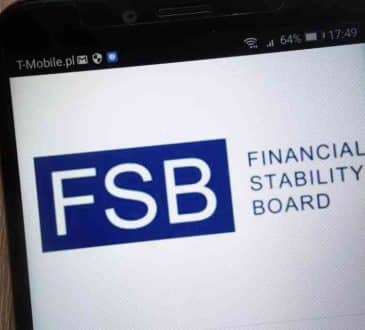Step Back to Move Forward: Making Space for Growth and Innovation

Unlocking innovation requires a strategic approach. This article explores unconventional methods to enhance creativity, suggesting practices like scheduling strategic retreats, preventing burnout among innovators through flexible schedules, advocating intentional leadership distance to foster psychological security, and encouraging a focus on smaller victories to achieve significant breakthroughs. By stepping back momentarily, organizations can create the necessary space for growth and pave the way for a more robust and agile innovation process.
In companies of all sizes worldwide, innovation remains a primary objective. Businesses want to continue generating fresh ideas, products, service lines, workflows, and more. They want to attract attention, generate buzz, and perhaps even attract early adopters eager to try the “latest and greatest.” However, even the largest organizations are discovering that while innovation is a commendable goal, it necessitates careful planning.
Contrary to popular belief, innovation isn’t about waking up one morning with a revolutionary “Aha!” moment. (Wouldn’t that be nice, though?) Some of the world’s most brilliant and renowned innovators—such as Edison and Einstein—dedicated years to developing workable inventions or concepts before unveiling them. They had the determination and resources to persist and continue testing day after day. Their steadfastness earned them recognition as significant innovators. Were they brilliant? No doubt. But they were also practical, which ultimately led to their success.
Of course, you probably don’t want to wait years for your team to develop innovations. After all, according to the Boston Consulting Group’s 2023 research, 79% of companies are focused on driving innovation. These are your competitors, and you don’t want them to overshadow your efforts or beat you to market. Consequently, your job is to innovate and innovate quickly. The key to making that happen is to create room for innovation to take place. And you might be surprised by some of the techniques that can be effective.
Below are four recommendations to enhance your workforce’s innovation capabilities. You’ll notice immediately that these are not the usual “lean into the problem” techniques. Instead, these methods are meant to facilitate innovation by temporarily slowing down. In other words, you’ll step back to give yourself breathing room and space before moving forward.
- Schedule regular strategic retreats.
Innovative thoughts rarely occur when you are immersed in the mundane, everyday tasks associated with work. To prompt creativity, you need to break free from the mundane. Strategic retreats are one possible solution.Strategic retreats aren’t just vacations where everyone can relax. They are designed to stimulate attendees and help them see concepts from different perspectives. For instance, let’s say you want to reconsider your customer service practices to better appeal to the 71% of consumers who desire personalized brand engagement, according to McKinsey and Company. Consider inviting a female keynote speaker to your strategic retreat to discuss the connections between innovation and customer service protocols at organizations in different industries. This would provide everyone with the opportunity to pause and reconsider what is possible, thereby fostering innovation.
- Prevent burnout among your internal innovators.
Do you have a team of employees you consistently rely on for innovation? They can’t innovate if they are stressed out and working at maximum capacity. Unfortunately, nearly nine out of 10 people have experienced burnout in the past year alone. Statistically, any team member could be part of that majority group. While there are several strategies to combat burnout, one immediate solution to consider is offering generous schedule flexibility and paid time off opportunities. When employees can recharge, reflect, and rebalance, they are not isolated from innovation. On the contrary, they are in a better position to see the world—and whatever you offer—in a refreshing light. - Resist the urge to always get involved.
Are you a leader in your company? Do you frequently check in with your innovation teams to ask about their progress? You may be causing more harm than good. People can become closed off when they feel they are being judged, observed, and assessed too frequently. It is better to schedule times for your innovators to come to you and present their findings and thoughts.It’s not always easy to practice this intentional distancing, especially if you enjoy the hands-on process of innovating. Nevertheless, removing yourself from the equation is worth it if you’re the boss. Employees will feel more psychologically secure and empowered to innovate when you’re not constantly asking them for updates — even if your intentions are positive.
- Aim for smaller victories or consider smaller goals (to achieve big success!)
Every company aspires to be the next Amazon, Salesforce, or McDonald’s, you name it. Smaller innovations are just as important as larger ones. Expecting only small innovations from your innovators can ultimately lead to significant breakthroughs. Therefore, encourage your innovators to focus on solving smaller problems instead of expecting them to present you with grand ideas for change.
Perhaps you want to develop a product to complement your existing product line. Your primary goal is to offer new and relevant products to cross-sell to customers. You could direct your innovation team to first explore ways to add features to your existing products. One of them could be the perfect cross-selling item with a few adjustments and new features. You wouldn’t need to start from scratch since you already have this product in your wheelhouse. Simply unveiling the updated product version could boost sales without incurring additional costs for manufacturing, design, and development.
If innovation is part of your game plan, ramp up your innovative efforts. Include some “low gear” practices in your innovation roadmap.
Written by Diana Kander.
Have you read?
Ranked: The most and least expensive US states to retire in 2024.
The Most (And Least) US States For A Family Of Four, 2024.
The Most (And Least) Costly US States For Single Workers, 2024.
These Are The 100 Best U.S. Cities for First-Time Homebuyers for 2024.
American News Brands For CEOs: Top 20 news websites in the United States for 2024.
Add CEOWORLD magazine to your Google News feed.
Follow CEOWORLD magazine headlines on: Google News, LinkedIn, Twitter, and Facebook.
Copyright 2024 The CEOWORLD magazine. All rights reserved. This material (and any extract from it) must not be copied, redistributed or placed on any website, without CEOWORLD magazine' prior written consent. For media queries, please contact: info@ceoworld.biz








